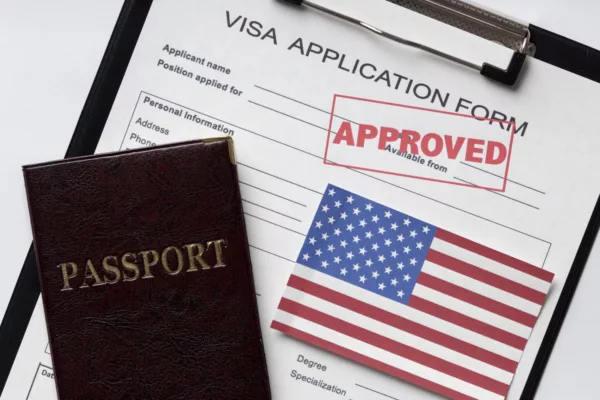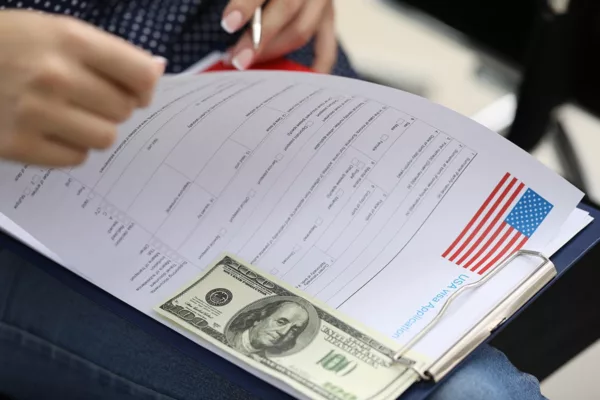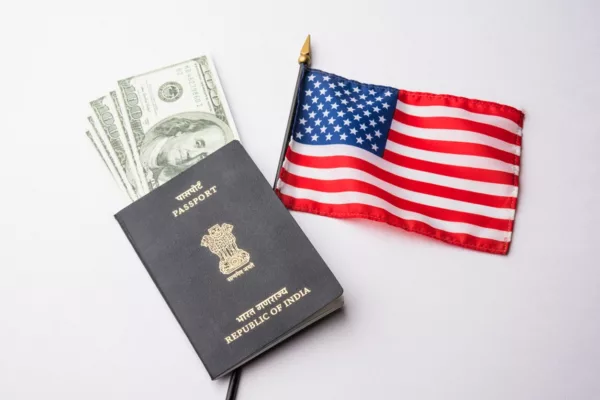US Plans New H-1B Visa Rules That Will Help Thousands Of Indian Techies

US Plans New H-1B Visa Rules That Will Help Thousands Of Indian Techies
The United States will begin a trial programme to reinstate “domestic visa revalidation” for certain visa types. The pilot programme is scheduled to start later in the year 2023. Once the change is completely implemented, it will be a huge relief for thousands of Indian professionals working in the United States. They won’t have to leave the country to get their passports restamped when their visas expire.
Which visa types qualify for “domestic visa revalidation”?
The “domestic visa revalidation” option will be available to international IT professionals with H-1B and L1 visas. “We are actively developing plans to resume this service for some petition-based NIV categories, and we aim to launch a trial programme by the end of the year. These applicants would no longer be required to travel abroad to renew their visas, “a representative for the State Department informed Press Trust of India.

In response to a question, a representative of the State Department said, “We cannot estimate the number of visa holders who might initially be qualified, but the program would start with a modest number of applicants before expanding over the next one to two years.
The H-1B visa: what is it?
A nonimmigrant work visa called the H-1B enables US firms to hire foreign workers for specialised positions that call for a bachelor’s degree or equivalent. Jobs in IT, finance, engineering, architecture, etc., can fall under this category. Technology companies must hire tens of thousands of people annually from countries such as China and India.
There is a limit on the total number of these visas that may be awarded annually due to the exceptionally high demand for them. The limit is currently 65,000 visas every fiscal year. The visa cap does not apply if your employer is a government research organisation, a nonprofit associated with an institute of higher education, or an institution of higher education. An H-1B visa is granted for increments of three years.
The L1 visa: what is it?

When an employer files a petition to get permission for qualified personnel to be authorised to work and live in the United States, L-1A and L-1B visas may be given. Intracompany transferees who hold managerial or executive roles in a company with operations outside of the United States are eligible for the L-1A visa, which is issued to those individuals. The L-1B visa is reserved for employees who are being transferred inside their organisation and working in roles that need specialised knowledge.
Similar to the H-1B visa, many US tech companies use this to hire competent workers from nations like India. L1 visas are not subject to a cap. While L-1B visas are awarded for periods of five years at a time, L-1A visas are issued for periods of seven years.
What does that imply?
It means that people with nonimmigrant visas in the H-1B and L1 categories will be able to renew them while still residing in the country. Restamping visas is not now permitted in the United States. After their stay has expired, visa holders must leave the country of the United States and return to their place of origin to obtain a passport stamp extending their stay.
Once in effect, those with H-1B and L1 visas who qualify may have their passports restamped within the borders of the United States. The current law, enacted in 2004, states that applicants must travel home and present their H1-B and L1 visas, passports, and supporting documentation during an interview or drop-box submission.
The highly sought-after H-1B visas are valid for three years. H-1B nonimmigrant visas allow firms in the United States to employ foreign nationals for positions requiring specialised knowledge. It is necessary to recruit tens of thousands of employees annually from countries such as China and India by tech firms.
Why is the US making this change now?

Since a few years ago, the amount of time needed to obtain a visa has significantly lengthened; at this point, some individuals have to wait up to two years to secure an appointment to renew an existing visa.
Experts claim that there are four main reasons why visa processing times have increased: a lack of staff at embassies, a sudden increase in tourist visas following pandemic-related closures, a backlog of applications from students and professionals in the workforce, and stricter country-specific protocols for granting visas. This is challenging for employers and professionals already on H-1B and L1 visas.
The Biden administration has taken many measures to deal with this issue over the past few months. United States Department of State officials say the plan being implemented was based on a recommendation made by the President’s Advisory Commission on Asian Americans, Native Hawaiians, and Pacific Islanders.
In a meeting last year, the Commission noted that individuals had been forced to wait up to two years for a visa renewal, stranded in their home country, while their families remained in the US. This approach, which hurt legal immigrants who contributed to the US economy, was unnecessarily harsh. The Commission advised creating a distinct department or unit to manage the restamping of extended H-1B and L visas inside the US. Notably, up to 2004, some nonimmigrant visa classifications, most notably the H-1B, allowed for internal renewal or stamping.
Edited by Prakriti Arora




